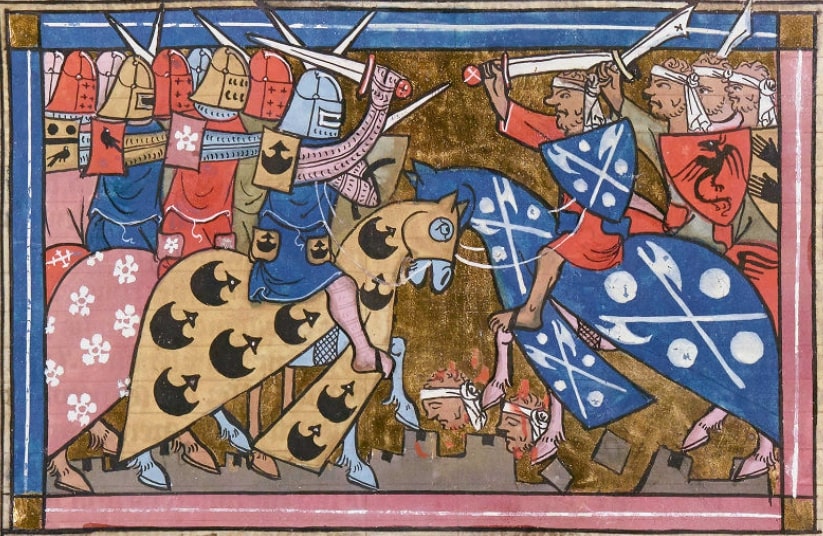Archaeologists in Lebanon recently made a significant discovery, uncovering two mass graves that held the remains of 25 Crusaders who perished in the 13th century. The excavation took place in Sidon, situated on the Mediterranean coast. The team unearthed the skeletons of young men and teenage boys within the dry moat of the St. Louis Castle ruins.
The bones, showing signs of chipping and charring, provide insight into the tragic fate of these individuals. Radiocarbon dating suggests that they were part of the wave of Europeans who were encouraged by religious leaders and rulers to join the Crusades between the 11th and 13th centuries in a futile attempt to reclaim the Holy Land.
All of the unearthed bones display unhealed wounds caused by stabbing, slicing, or blunt force trauma. The majority of these injuries are located on the fighters’ backs, indicating they may have been attacked while attempting to flee. It is speculated that they were pursued, possibly by adversaries on horseback, based on the location of the wounds.

To confirm the origins of the individuals, the archaeologists conducted DNA analysis alongside studying naturally occurring radioactive isotopes found in their teeth. This analysis confirmed that some of the men were born in Europe. Additionally, an examination of different carbon isotopes in their bones suggests that they perished during the 13th century.
St. Louis Castle, which the Crusaders initially captured shortly after the First Crusade in 1110, served as a vital strategic port in Sidon. Despite holding onto the castle for over a century, historical records indicate that it fell following two attacks: partially by the Mamluks in 1253 and later by the Mongols in 1260.
One individual was found with an alarming number of wounds, amounting to at least 12 injuries spread across a minimum of 16 skeletal elements. The severity of these injuries suggests an instance of overkill, where excessively violent blows were inflicted, surpassing what was necessary to subdue or kill the victim,” the researchers noted in their study.
Furthermore, charring observed on some of the bones indicates that attempts were made to burn the men’s bodies following their brutal deaths. Subsequently, their corpses were left exposed on the battlefield to decompose.
Avid Writer with invaluable knowledge of Humanity!
Upcoming historian with over 30 million views online.
“You make your own life.”





